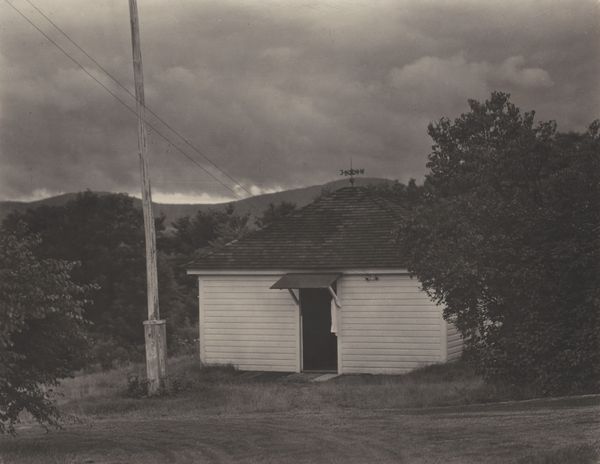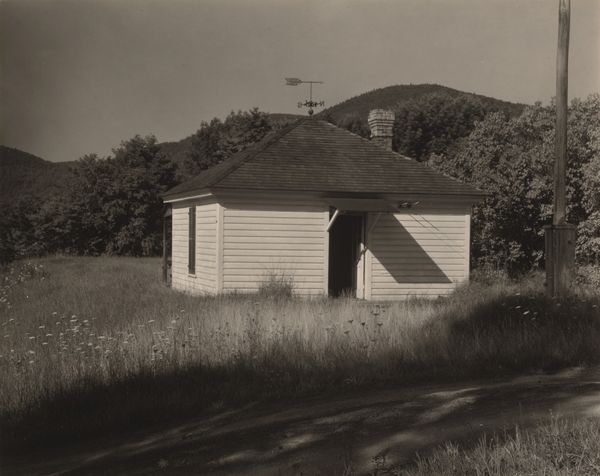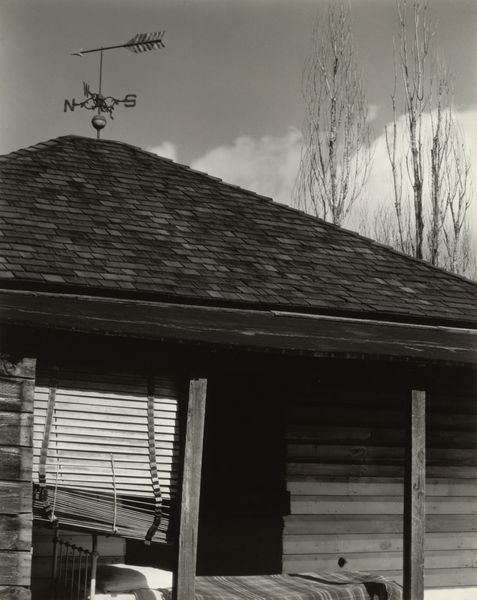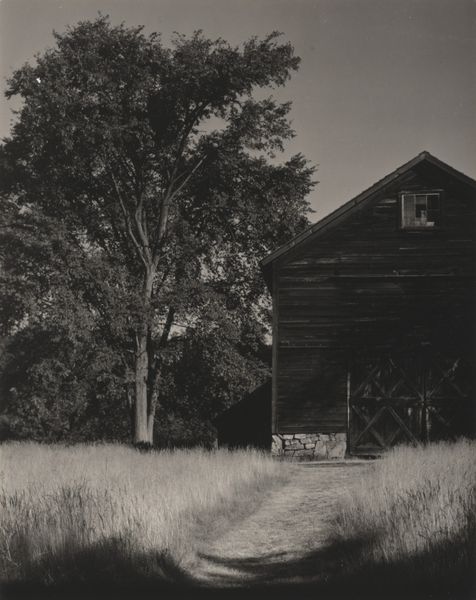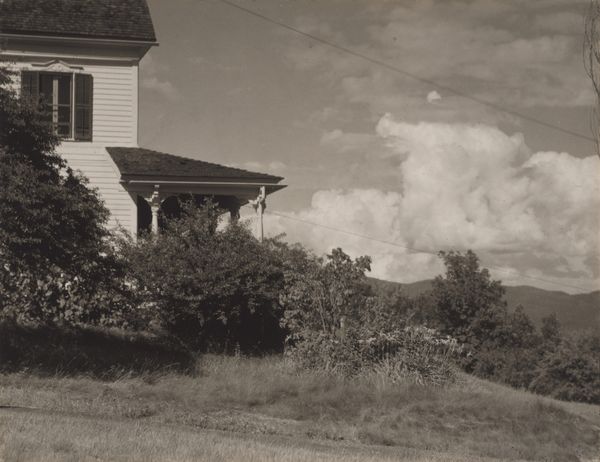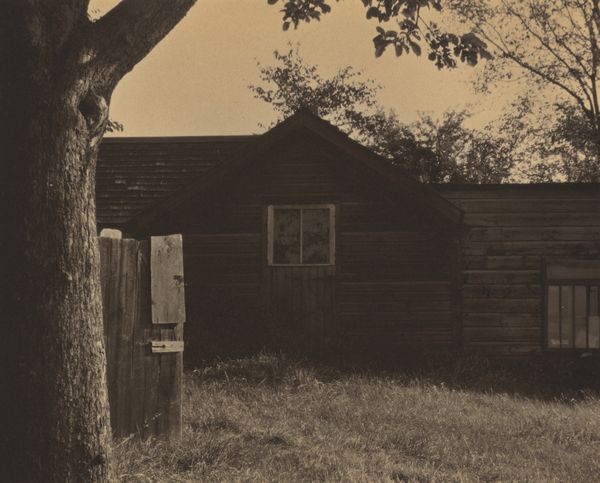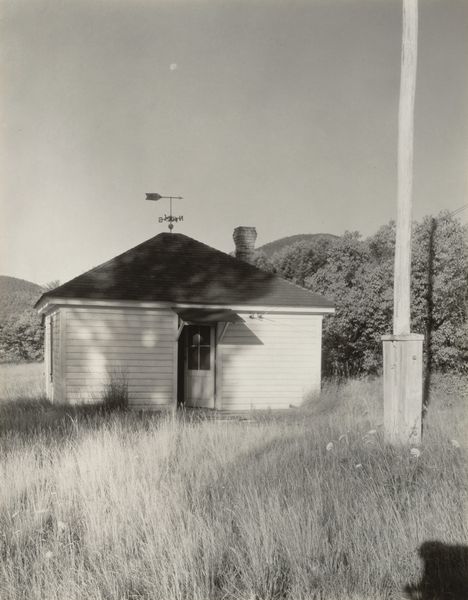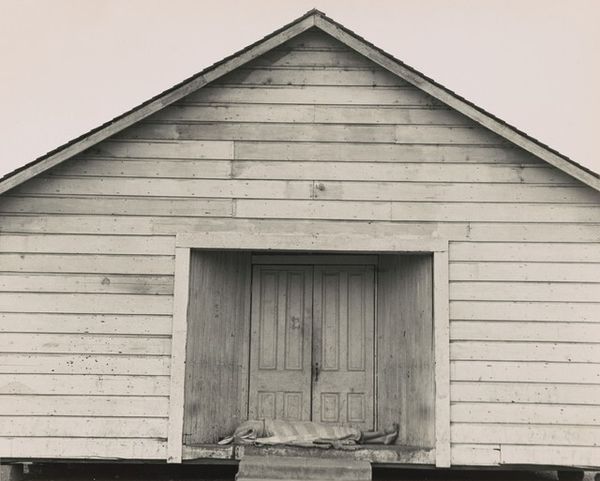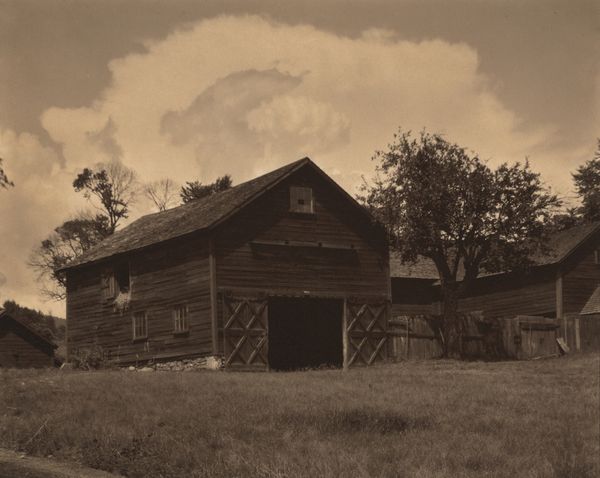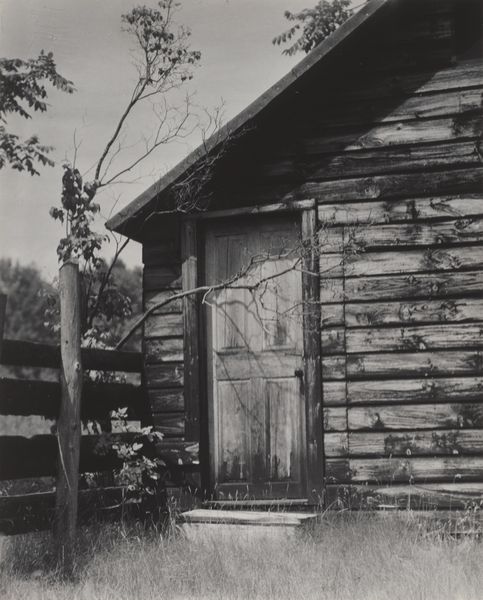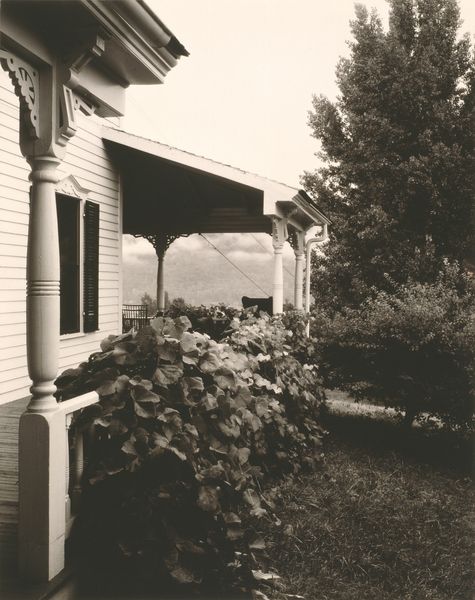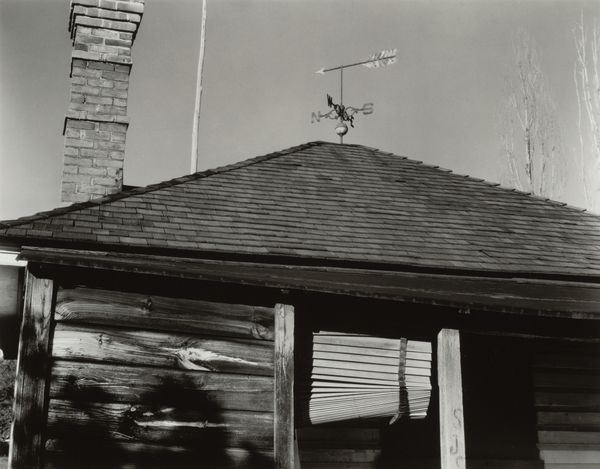
photography, gelatin-silver-print
#
precisionism
#
black and white photography
#
landscape
#
black and white format
#
photography
#
black and white
#
gelatin-silver-print
#
monochrome photography
#
monochrome
#
monochrome
Dimensions: sheet (trimmed to image): 9.5 × 11.7 cm (3 3/4 × 4 5/8 in.) mount: 35 × 27.4 cm (13 3/4 × 10 13/16 in.)
Copyright: National Gallery of Art: CC0 1.0
Editor: Here we have Alfred Stieglitz's "The Little House, Lake George" from 1936, a gelatin-silver print. It's quite stark; the black and white tones and geometric shapes give it a really solid, almost industrial feel despite the rural setting. What stands out to you in this image? Curator: What strikes me is the intersection of the organic and the manufactured. Look at the telephone pole on the left, cutting diagonally across the composition, its sharp lines and manufactured perfection a direct contrast to the surrounding trees. The labor and resources needed to put it there – to provide rural America with modern conveniences – interests me. Editor: That's a really interesting point! I was so focused on the house itself I didn't really think about the pole in that way. How does that reading affect your view of the house, too? Curator: It shifts it. The house, built from lumber, is a product of a different kind of labor, perhaps more traditional. Stieglitz is placing these side by side, but he is doing so in a way to make the viewer contemplate how consumerism plays a large part into settling of rural areas. The shadow highlights how manufactured and almost cold the house itself appears to be, despite likely being someones house. Editor: So, by carefully juxtaposing these elements, he's encouraging us to think about the changes happening in the American landscape, not just aesthetically, but in terms of how things are made and used. It’s fascinating to see the photo itself as a record of material transformation. Curator: Exactly. We aren't just looking at pretty trees and house, it shows the ever industrial growth taking place. Now look again at that telephone pole—who benefitted? Who provided the material? It is something to take away with you to better question. Editor: I'll definitely be considering the layers of labor and materials behind every landscape image from now on! Thanks! Curator: It's a matter of reading the image through its tangible realities.
Comments
No comments
Be the first to comment and join the conversation on the ultimate creative platform.

